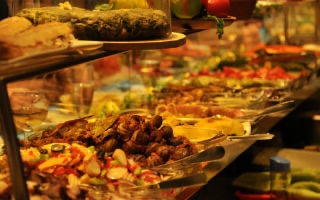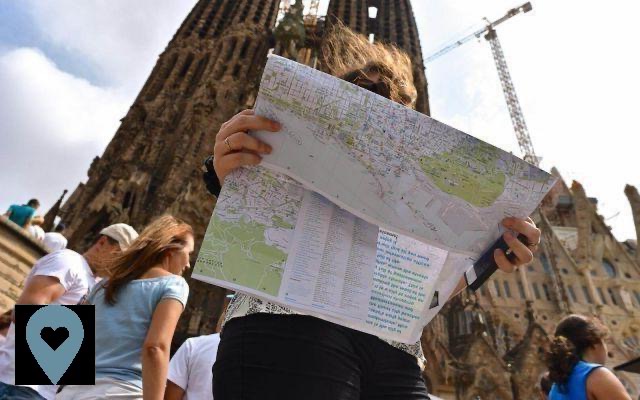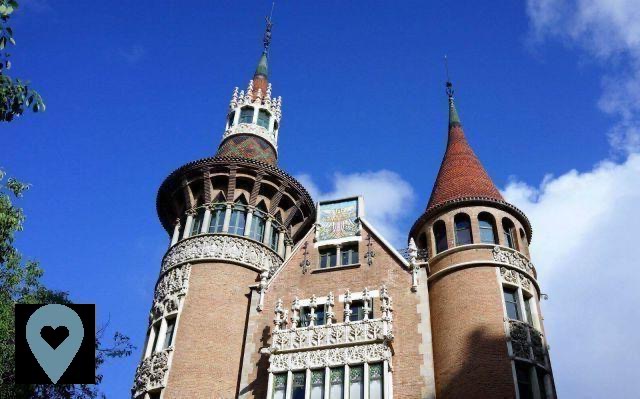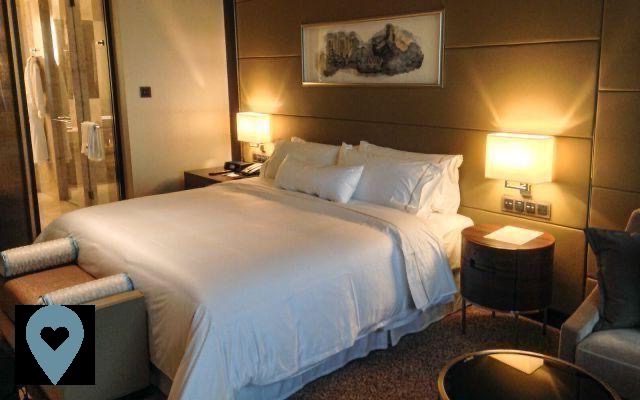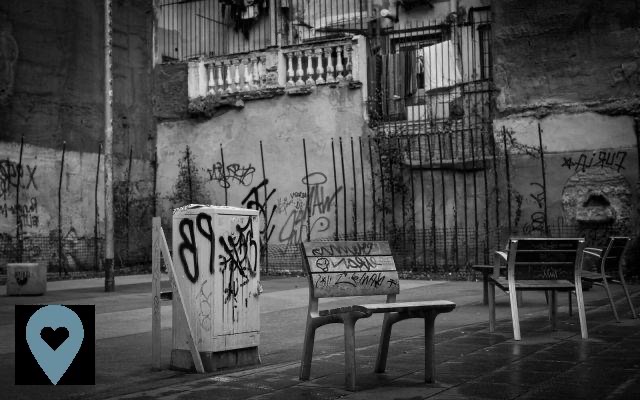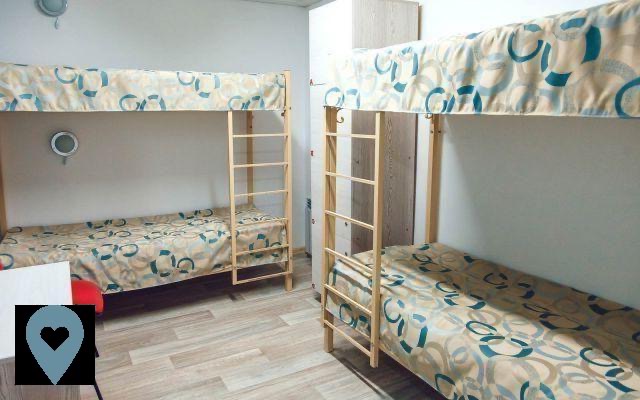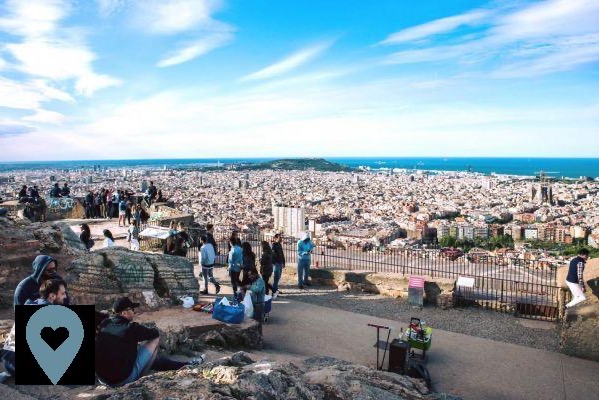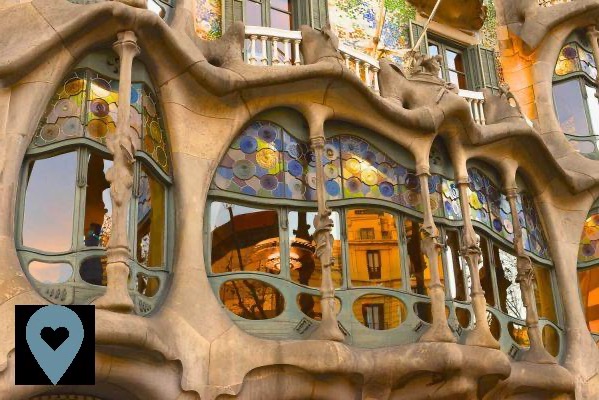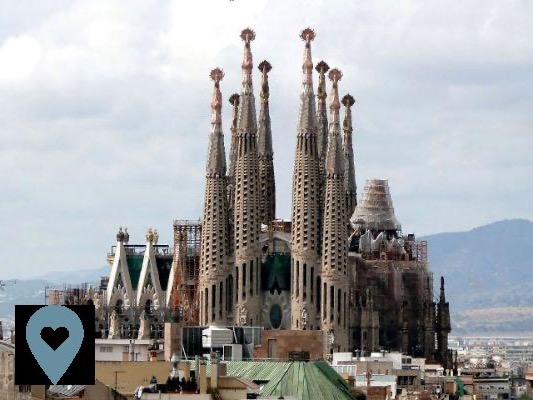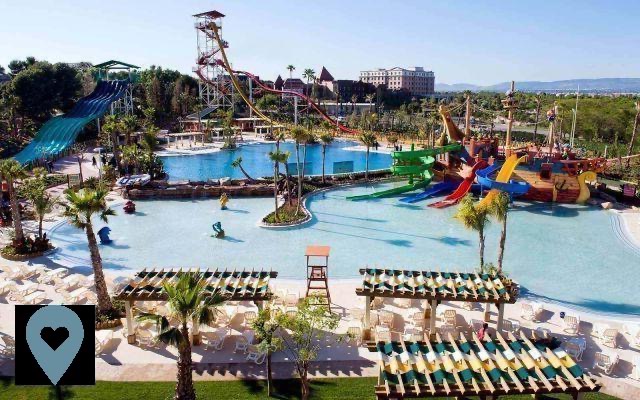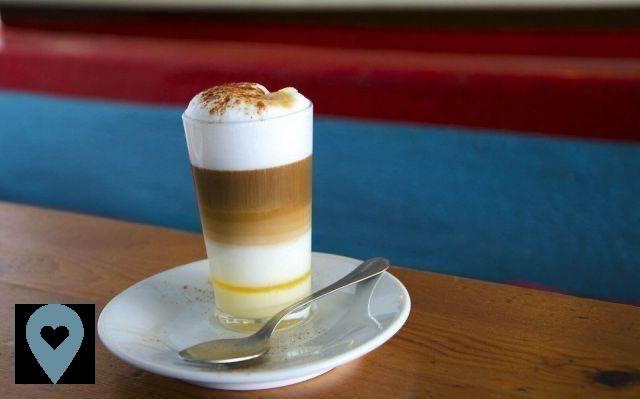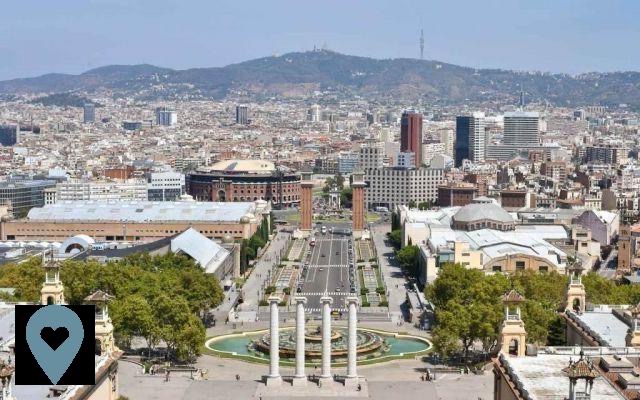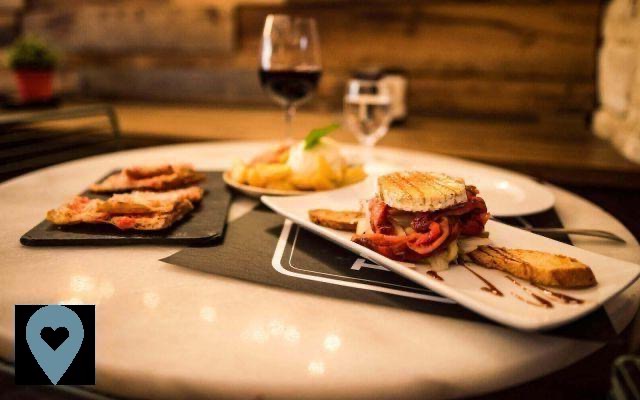

Eating well can make you have a better vacation, it is a shame that tourists come to Spain carelessly, unable to make a decision when they have a menu in front of their eyes.
This is why you are here, and since you want to know what to eat in barcelona, I'll help you separate the tasty dishes from the bland ones and show you where to go.
Let's explore the city to discover the Barcelona specialties.
What to eat in Barcelona: culinary specialties
Catalonia's growing culinary wealth is reflected in everything from simple home cooking to the city's current list of 24 Michelin-starred restaurants. In total, more than 100 restaurants have received this distinction, making Barcelona a culinary capital European.
But what concerns us here are the Catalan specialties from Barcelona.
As always, remember that I do not have an agreement with any of these restaurants, if we are talking about them here it is because I tried them myself or because I found out about them. knowledgeable local friends.
Typical tapas of Barcelona
Bomb
Among the legends about the origins of this typical Barcelona tapas dish, probably the most famous, is that it was invented centuries ago in the coastal neighborhood of Barceloneta.
We are talking here about Mashed potato balls stuffed with ground pork, covered in breadcrumbs and fried like a donut.
What takes this delicious dish to the next level are the two sauces to highlight: brava sauce (spicy, with onion and paprika) and aioli (creamy, with garlic and lemon).
It is when the sauces are mixed with the crispy potato and melt in your mouth that as the name says: a bomb!
Where to eat bombs: Of course, Barceloneta! La Cova Fumada (Carrer del Baluart 56, Barceloneta metro) is a must for these delicacies. The legendary owner of one of the best tapas restaurants in the city claims that his mother invented the bomb more than 60 years ago.
True or not, these are the best in town and cost only around € 2,00.
AlternativesThe name La Bombeta (Carrer de la Maquinista 3, Barceloneta metro) says it all, and this restaurant has so much history that it is not known exactly who founded it and when. What we do know is that on a good day they serve more than 1 bomb.
Esqueixada of cod
Step into one of Barcelona's markets and you'll notice the city's love of cod - dried, salty cod that is rehydrated to create a variety of dishes, from salads to main dishes.
With the Esqueixada de Bacalao we are talking about a grated cod salad. They then add fresh tomatoes, onions, and black olives with a light dressing. Some versions even have green chili.
You will usually find trays on the bar and it is a great lightweight option to balance the heaviest fried dishes of Catalan cuisine. It goes well with a glass of cold house white.
Where to eat cod esqueixada: Polleria Fontana (Carrer de Sant Lluis 9, metro Joanic) is famous for its informal and cozy atmosphere for its tapas. It is located in the heart of the charming Gracia neighborhood. They also make amazing chicken nuggets and patatas bravas.
Alternatives: still in Gracia, Cal Boter (Carrer de Tordera 62, metro Joanic), a fantastic Catalan restaurant in Barcelona that offers some of the best cold appetizers in the city.
If you're more thirsty than hungry and looking for one of the best bars in Barcelona and a local place to soak up the city, head to Vermutia la Gabia (Plaça d'Osca 7, Plaça de Sants metro): vintage charm and quality tapas combined with a good homemade vermouth.
Tomato bread («Tumaco bread»)
Of all the dishes to try in Barcelona, this is my number one, although the French translation of "tomato bread»Doesn't do this dish justice Very simple.
The most sought after dish in Catalonia is like most good Mediterranean dishes, because it is all about simplicity and freshness. The plate starts rubbingraw garlic on freshly toasted bread: either leaf bread (abundant and rustic), or coca bread (crunchy, durum wheat).
So you have to rub a ripe tomato (Hanging tomato) you ajouter delextra virgin olive oil.
If Catalan cuisine had an equivalent to naan bread, this would be it. It is used to mix oils and sauces or to accompany the best Spanish sausages and cheeses.
Don't go for tapas without ordering at least one piece per person.
Where to eat diciembre pan con tomate: the small neighborhood bar Bodega Can Ros (Carrer de Roger de Flor 303, metro Joanic) makes one of the best bread with tomato in Barcelona.
Alternatives: Recasens (Rambla del Poblenou 102, Llacuna metro) is an elegant buffet-style tapas bar that makes an excellent version with a cheese and meat platter.
Cal Pep (Plaça de les Olles 8, Barceloneta Metro): This somewhat pricey bar has the quality to match, so take a seat at the bar and rub shoulders with bohemian businessmen, travelers, and locals.
Iberian Ham
Le famous raw ham from Spain it comes from two breeds of pigs: Serrano and Iberico (also called black leg).
You can add the name Acorn, which means that the pigs were fed a diet of acorns, the percentage of their diet is explained in the number that precedes the name.
You will be able to taste the extraordinary ham from pigs fed exclusively with acorns, whose ideal would be a 100% acorn-fed Iberian ham. That said, the raw ham found in Barcelona is an integral part of a meal here.
I have already talked about the Boqueria market in other articles, but for fewer people and of equal quality, I like to take my ham to Santa Caterina Market.
Where to eat Iberian ham: The easiest way to taste it is probably in Enrique Tomas, Carrer Marina 261. It is very close to the famous Sagrada Familia. There you will find all the types of ham you can imagine and you can even go with vacuum packed ham for home.
If you spend 10 euros or more and say you are a friend of Visit Barcelona, they will give you a coffee!
Alternatives: Jamon Jamon (Carrer d'Europa 23, metro Maria Cristina). If the truth is in a name, look no further than this specialty store in the Sants or Les Corts district, right next to the famous Camp Nou stadium.
Taverna El Glop (Carrer de Sant Lluis 24, Metro Joanic), this historic tavern in Gracia has been loved by the locals for over 40 years and is just a 10-minute walk from one of Gaudí's masterpieces: the Casa Vicens.
scaly
The word escalivada comes from the Catalan verb “escalivar” which means “to cook the ashes of wishes”.
Simplicity also reigns with this dish, Escalivada is a grilled mixed vegetables: aubergines, peppers and onions, dressed with olive oil, salt and pepper. A great vegetarian option for travelers.
It is not uncommon to get a escalivada with toast or even anchovies.
Where to eat Escalivada: Almost a bar (Carrer Massens 74, metro Joanic) doesn't seem worth it until you see herds of locals making their voices heard. You will not find better value for money in a place with home cooked food. A great place to visit before or after Park Güell.
Alternatives: La Flauta (Carrer d'Aribau 23, metro Universitat) serves authentic and hearty tapas with an amazing version of escalivada with goat cheese that in itself is worth visiting. If you visit Casa Batlló, this is a great option.
Typical Catalan main dishes
calçots
It seems strange to eat bootshuge green onions, but these vegetables from the Catalan region of Valls they are so ingrained in Catalan culture (and their spring barbecues called calçotas) that not liking them is considered a national affront.
What makes them perfect is a hot sauce called romesco made with tomatoes, red pepper, garlic, breadcrumbs and toasted almonds.
You'll usually see them charred on the outside, still having a tender center, and then served up in an old newspaper. He is impossible to eat it properly so make good use of your towels.
There is also a technique. Make sure to tilt your head back, lift the calcot above your head, and reach for your mouth. Does this sound crazy? Don't ask questions, just copy the Catalans by your side.
This is the food to eat in Barcelona December to March.
Where to eat calçots: Carmen Restaurant (Carrer de Valladolid 44, Plaça de Sants metro). This simple restaurant prepares all the specialties of Barcelona to perfection. For € 30,90 you will get calçots, a ton of meat, wine and dessert.
Alternatives: Nou Can Martí (Passatge de la Font del Mont 4, trains S1 and S2 stop Peu de la Funicole; then 20 minutes on foot). It's not easy to get to, but once there, you'll have a rustic spot high above the city, with some classic barbecue options. Great for groups.
Can Xurrades (Carrer de Casanova 212, metro hospital clinic). A great restaurant for meat eaters that is an essential stop in Barcelona's calçots circuit: they are supplied directly from a garden in Valls.
Fideua
La Fideuá is a local alternative to paella, however Catalan it may be.
The recipe and cooking method are practically the same, but instead of rice it is types of pasta ("Noodles") and almost always accompanied by a Aioli sauce lemon.
There are different versions of this dish, the most popular being squid and prawns, chicken, rabbit or a type of land and sea called mar i muntanya.
Where to eat in Fideuá: Canet Restaurant (Carrer Canet 38, Sarria metro) is a picturesque family restaurant located in a quiet corner of the Sarriá neighborhood. It serves one of the best fideuá in Barcelona.
Alternatives: La Mar Salada (Passeig de Joan de Borbó 58-59, Barceloneta metro). This fish restaurant is the place to be if you want the seafood version of Catalonia's favorite pasta dish - be prepared to pay a bit more.
Xiringuito Escribá (Av del Litoral 62, Ciutadella-Vila Olímpica metro). If you want to dine by the sea in a classic Mediterranean atmosphere, this place is ideal for the whole year. The land and sea version is fantastic.
Sausage with beans
Another Catalan dish for those who seek consistent food. The mongetes (white beans) are cooked slowly in one pan, while the butifarra (a large spiced Catalan pork sausage) is cooked in another.
They are then mixed at the last minute so that the beans absorb all the richness in fat.
Again, not the best dish for hot August days, but you'll be happy to have it if you go during the December holiday period.
Where to eat butifarra con alubias: Romesco Restaurant (Carrer Sant Pau 28, Liceu metro). This typically Catalan place at a fair price serves all the traditional recipes under the sun and is a stone's throw from the famous Rambla.
Alternatives: Can Culleretes (Carrer d'en Quintana 5, Liceu metro). The photos on the walls tell the story of the oldest restaurant in Barcelona, which is also the XNUMXth oldest restaurant in Spain: a feat of height.
screws
In Catalonia, snails are eaten in two ways: in the can (canned), cooked with garlic, parsley, peppers, and wine vinegar. the screwed There is another solution: snails cooked directly in their shell with salt, pepper and even a touch of butter.
In both cases, the snails are eaten with aioli and hot sauce.
Where to eat cargols: El Pebrot i el Petit Cargols (Carrer Alcolea 18, Metro Plaza de Sants). Snail lovers rejoice in this place near the Sants Estacio station with varieties for all tastes. And if you don't like snails, the grilled meat dishes are up to the task.
Alternatives: Can Cargolet (Carrer del Comte d'Urgell 17, metro Urgell). Hearty portions and decent prices prevail here, and their most delicious dish is rabbit snails.
Traditional desserts Barcelona
Catalan cream
The star of Catalan desserts is this type of local burnt cream.
It is made with milk, egg yolks, sugar, a little lemon and orange zest and cinnamon. However, unlike crème brûlée, it is not cooked in a double boiler, which gives your body a totally burned appearance. crunchier.
In fact, the Catalan nickname for dessert is una burned ("a burned thing").
It's arguably the most popular food in Barcelona, and when it's freshly prepared, there's really nothing quite like it: creamy, sweet, a little sour.
Where to eat cream Catalana: Café Granja Viader (Carrer Xucla 4-6, Liceu metro). It is the favorite place for sweets in the city. And it's just a 10-minute walk from Barcelona Cathedral.
Alternatives: Dulcinea Farm (Carrer de Petritxol 2, Liceu metro). Another sweet stopover that can be found on rue Petrixol, a small alley famous for its delicious bakeries and places specializing in churros with chocolate.
Mel i killed
This simple and refreshing dessert is based on a type of Ricotta cheese called killed. It can be shaped like a slice of cake or just packed into a ball, then it is drowned in honey and topped with walnuts.
If you are the type of person who loves chocolate cheesecake, this is for you.
Where to eat mel i killed: La Sopa Boba (Carrer Bruc 115, metro Girona). The version of killed here is more of a shiny crumble than anything else. Changing tradition has never been so delicious.
Alternatives: Segons Mercat (Carrer de Balboa 16, Barceloneta metro). This small coastal establishment can be a bit touristy, but the best thing is that they are supplied in the Mercat de la Barceloneta, nearby.
El Cercle (Carrer dels Arcs 5, metro Jaume I): these trendsetters had the courage to merge Catalan and Japanese! Whether you're at the bar or in the beautiful garden, it's hard to find that class in the middle of the Gothic Quarter.
coca
Actually, this famous Catalan dessert has two versions: sweet and salty.
Head to any bakery and you'll find both versions, including special holiday variations (the most famous is Bonfire Night in San Joan on June 24).
What you get is kind of sweet pastry Who could it be embellished or stuffed top with cream, candied fruit or icing sugar.
You'll find them rounded like donuts or the thinner and longer version called crystal coke.
Where to eat cola: those of Forneria Turris (Carrer Gran de Gracia 34, Diagonal metro), one of the most famous bakeries in the city, makes all the favorite dishes. Although there are many places, I suggest the one that is ideally located to take a break from a visit to Casa Mila.
Alternatives: Another classic bakery is Escribá (Gran Via de Corts Catalanes 546, Urgell metro), where ancestral traditions are appreciated. If you are looking for chocolate coke, this is the place. There is one on the Rambla.
Eat more tips in the comments below.
If you still don't know what to eat in Barcelona, I personally think you are a bit picky, but if you need more advice about Catalan cuisine or anything else related to your holidays, leave me a comment below.
Also, don't be afraid to join the discussion on my new Facebook group called "For City Lovers." Here you can ask questions, voice your complaints, chat with other travelers and more - anything goes!
Have a good meal ?





